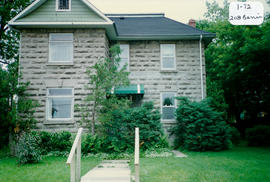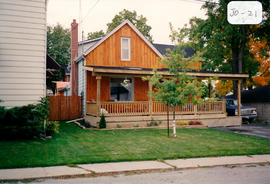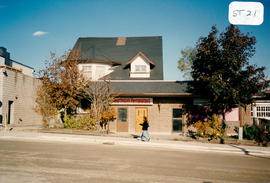208 Barrie Street - The Hulse House
- CA BWGPL GJ-HB-2017-03-15-08
- Stuk
- 1996
Part of George Jackson fonds
The Hulse House is located mid-block on the west side at 208 Barrie Street. It was built post-1900 in the Eclectic Edwardian style. The two-storey, ‘L’-shaped building has a hip roof. A projecting, two-storey wing has a gable roof. Edwardian features include the large window openings and transom lights over the principal windows (which appear to be original) and the precast, concrete sill and lintel and projecting keystone at the main-floor front window. A variety of materials and textures, including rusticated block and wood siding (at the gable), is a Queen Anne feature. The moulded roof curb in the hip roof with broad eaves is an Italianate feature. The house has its original windows, block masonry construction, and a block foundation. According to the 2000 inventory, the metal siding and trim at the gable and soffits conceals the original wood trim. It also notes that the original porch at the entrance has been replaced by a metal awning that is not sympathetic with the original design. (1, 3)
Zonder titel










